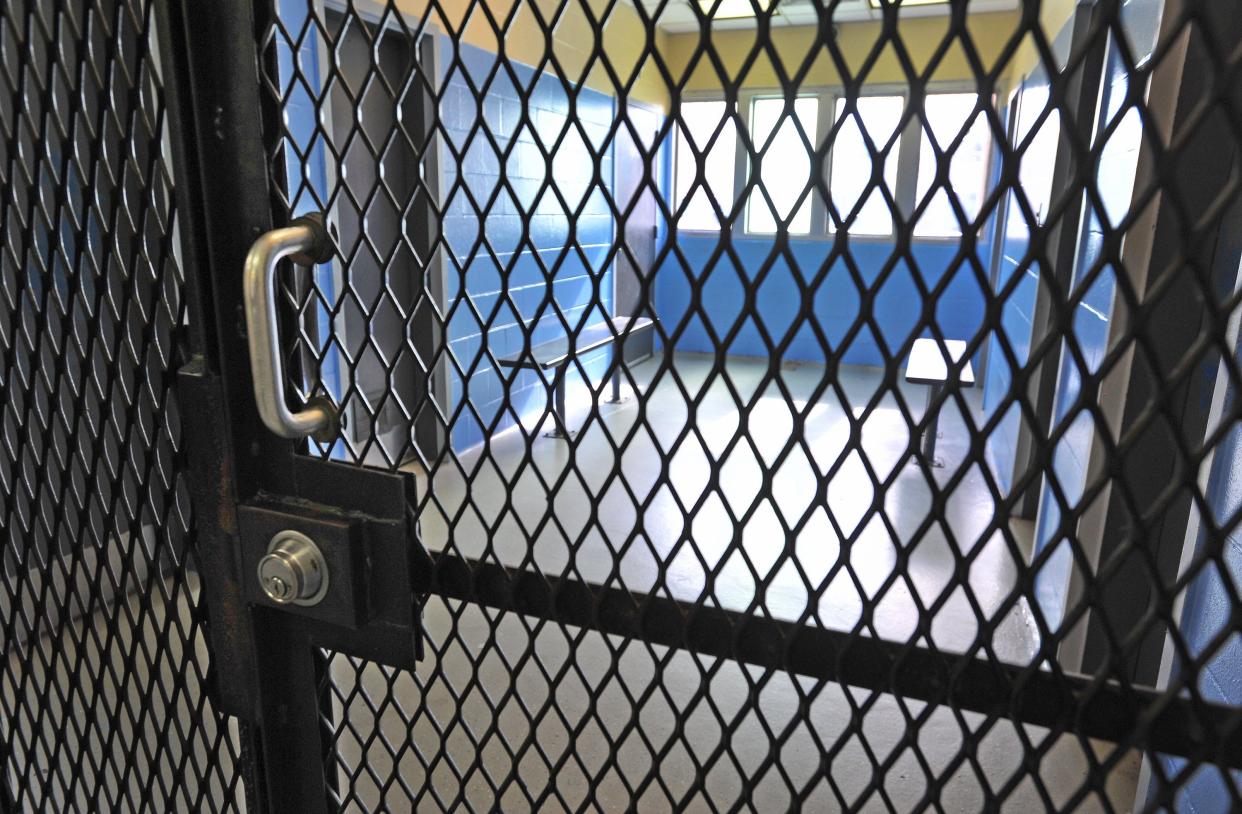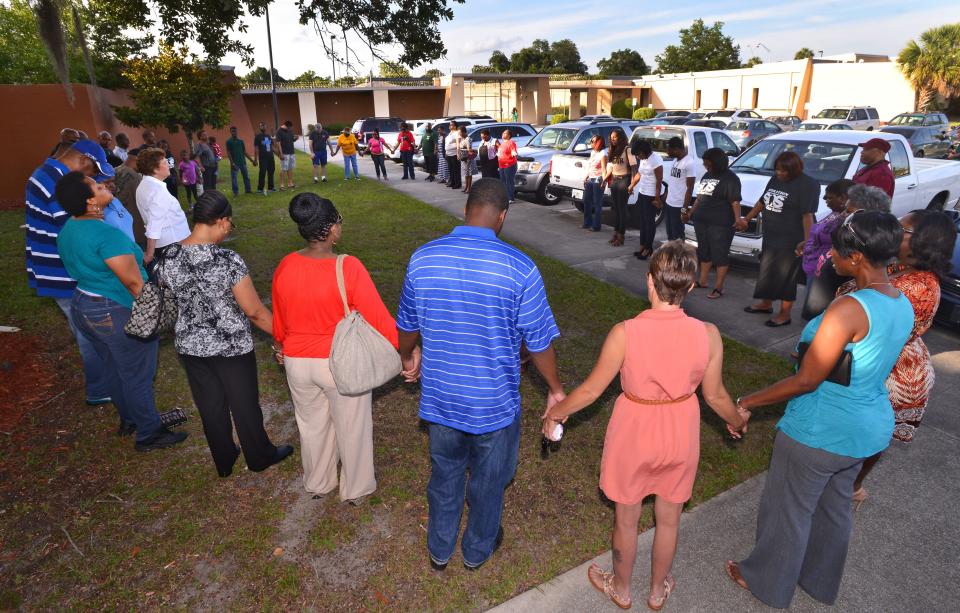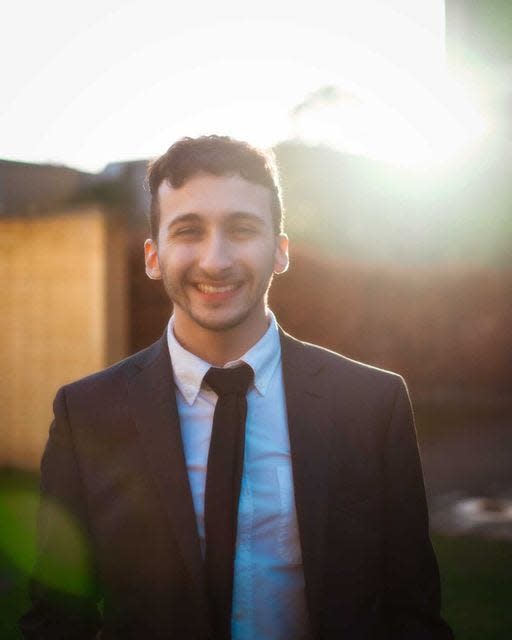Ethan Liebross: What surprised me most when I walked into the jail for Jacksonville youth

While heading into the Duval Regional Juvenile Detention Center with The VERB Kind, an organization dedicated to supporting incarcerated youth, I watched a white van unload a young man who shuffled into the facility with his ankles cuffed.
The detention center sits off the corner of East Eighth Street and U.S. 1, a stone’s throw away from Downtown Jacksonville. With its one-floor, bland cement exterior and sunken look, you’d almost never know it was there.
Inside, I found empty halls lined by solitary confinement cells with young faces pressed against the window, fogging up the glass, staring back with sullen looks.
2022 report:'Blueprint' reveals girls in Florida are in crisis, 40,000 arrested in last 5 years
Thea Ramirez:New solutions, grassroots action for ending the foster care-to-prison pipeline
Letters to the Editor: Hypocrisy has free rein in Florida
What was immediately apparent was that the 95-bed jail was disproportionately made up of young Black boys, including one just 10 years old. In Florida, even youngsters can be put behind bars.
They were dressed in navy blue scrub bottoms and green T-shirts. Many had tattoos, some wrapped around their neck in intricate designs. I saw scars three inches or longer on several of the boys.
It’s widely known that depression and anxiety are commonplace among justice-involved youth. However, what struck me most was seeing features of neurodevelopmental disorders like autism. Why are neurodivergent youth being held here?
After introductions, the volunteers and I broke into small groups where we talked about music, passions and goals. Caleb, a tall, athletic volunteer in his mid-20s who once lived “on the streets” of Jacksonville and is now a pre-dental student, had a push-up contest with one of them.
I asked one of the boys if he would rap for me.
“OK, I need a beat,” he said, smiling.
Another boy with dreads came up and threw his arm around him in a friendly embrace.

“Boots and cats, boots and cats, boots and cats, boots and cats.”
That’s when it hit me — these really are just kids.
At the end, we circled up for prayer.
A 13-year-old boy, not quite 5 feet tall, led the prayer: “Please, God help us, forgive us. Help us get out of here so we can go home and be better.”
Youth in juvenile detention centers are at high risk. They are more likely to have sexually transmitted diseases, violence-related injuries, asthma, fetal alcohol syndrome and other poverty-related conditions. Many have been through trauma, which in the literature is called ACEs, or adverse childhood experiences. Many come from troubled families — without role models.
Even though there are weekly visitation hours, it’s common for no one to show up. And for the youth who do suffer from depression, anxiety and trauma, access to therapy is lacking.
A frightening trend:What does the 2021 Youth Behavior Survey reveal in Jacksonville?
‘She looks like a baby’:Why do kids as young as 5 or 6 still get arrested at schools?
Youth at Duval Regional Juvenile Detention Center are only supposed to be there for a maximum of 21 days. With few public defendants to represent them and a long list of cases at the front of the line, many get lost in the system, nervously awaiting trial for months on end.
After that December visit, I spent the next several weeks doing research, trying to understand the perplexity that is the juvenile justice system.
Among those I spoke with was Dr. Elizabeth Barnert, a professor, pediatrician and self-proclaimed “juvy doc.” Her research contributed to the passage of California SB 1322, which decriminalizes child victims of commercial sexual exploitation and to SB 439, which excludes youth eleven and under from entering the juvenile justice system.
I learned incarcerating youth damages physical and mental health, impedes educational and career success and often exposes them to abuse. From the research, it’s clear that most youth would be more effectively supported outside the juvenile justice system.
The state of Florida needs to raise the minimum age of youth entering the juvenile justice system to align with the stance of the American Academy of Pediatrics and with conventions put forth by the United Nations.
Nationally, we need to invest in community-based alternatives — community service, family preservation and mentoring.
We need to protect vulnerable youth, including those exposed to gun violence, high levels of trauma, sexual exploitation and who suffer from mental illness. Most critically of all, we need to find ways to support children so they don’t end up in jail in the first place.

Ethan Liebross is a freelance journalist who is currently living in a tiny van while traveling the U.S. in search of stories about public health, culture and social justice. Originally from New Jersey, he plans to start medical school this fall.
This guest column is the opinion of the author and does not necessarily represent the views of the Times-Union. We welcome a diversity of opinions.
This article originally appeared on Florida Times-Union: Searching for answers at local jail for Jacksonville youth

